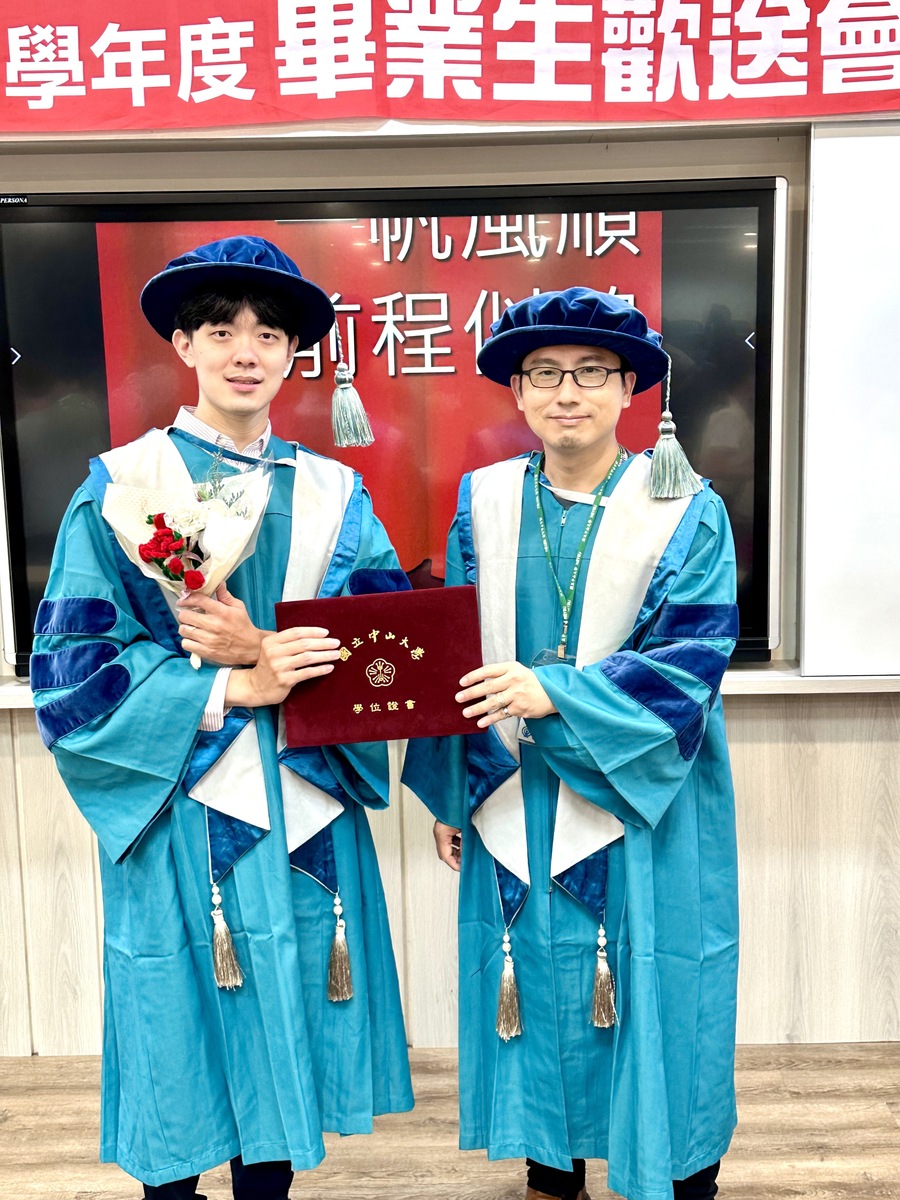NSYSU doctoral student won the Hon Hai Technology Award for the original iris recognition technology








2024-08-27
In the movie "Minority Report," Tom Cruise's character can unlock devices, make payments, and even receive personalized advertisements just by scanning his eyes, showcasing the ubiquity of high technology in iris recognition identity. Kuo-Chun Lin, a doctoral student of the Institute of Communications Engineering at National Sun Yat-sen University (NSYSU), has conducted cross-disciplinary research on iris recognition security technology. His research results have broken through a global bottleneck that has persisted for 14 years, preventing potential hacker intrusions and successfully increasing the security coefficient a thousand times. Two of his papers were accepted by high-quality journals, including one published in the prestigious journal IEEE Transactions on Dependable and Secure Computing, and this achievement earned him the 2024 Hon Hai Technology Award.
Kuo-Chun Lin stated that under the wave of AI, compared with traditional account passwords and identification cards, biometric technologies provide users with unique characteristics that can be "carried on hand" and are not afraid of being lost and cannot be easily copied, thus avoiding information security risks from theft, and the applications are numerous. Among them, the iris features uniqueness, permanence, and high-level information density. Even twins with similar appearances have unique irises, making them more identifiable, and the characteristic texture of the irises will not be changed due to wrinkles. The iris has more than 240 feature points, far superior to the fingerprints with 40 feature points, and the frontal faces with 68 feature points, giving it an absolute advantage in security performance. However, once hackers master biometric information, it is equivalent to losing the right to use it forever, making research on biometric resource security protection urgent.
Kuo-Chun Lin explained that traditional biometric recognition technology typically stores complete biometric template in a database for comparison, but this approach is not secure. Subsequent literature pointed out that the error-correction capability of error-correcting codes (ECC) can be used to eliminate measurement noise in the biometric cryptosystem and encrypt the biometric template through a hash value. The hash function has the characteristics of irreversibility, which can prevent hackers from restoring biometric information. However, after reviewing various studies around the world, he unexpectedly found that 14 years ago, scholars had questioned that hackers could use the core concepts and theorems of information theory and coding theory to break encryption systems through error-correction-based attacks. Despite this, no solution had been proposed, leaving the progress of iris security technology pending.
Under the guidance of Yen-Ming Chen, his advisor and Associate Professor of the Institute of Communications Engineering, Kuo-Chun Lin devoted himself to research and initially focused on the design of error-correcting code structure, feature extraction, and decoding algorithms, significantly enhancing the security level and recognition performance of the biometric cryptosystem. It is the first team in the world to develop a system that can improve the recognition performance of biometric systems without changing the code rate. The team later proposed the soft reliability value extraction method for iris feature codes and implemented template mapping technology based on the coding design concept. It enabled the use of high-code rate error-correcting codes that are more difficult to decode and the adjustment of error-correcting codes according to different iris databases to maximize the error-correction capabilities. The team continued to propose multi-scale dominating feature points, use the image recognition tool Gaussian blur filter to extend the iris feature code a hundred times in length to create additional biometric information, and more strictly select a minimal number of feature points for recognition. Looking at the overall research results, not only can the recognition accuracy of the system be significantly improved, but the security bit can be increased from 1 to 100 in harsh environments, and the security coefficient can be increased by a hundred times. It can exceed a thousand times in an ideal environment, successfully eliminating the possibility of error-correction-based attacks invasion.
While iris recognition technology is still unfamiliar to most people, Kuo-Chun Lin pointed out that it is already used in places like India's Aadhaar system, Dubai International Airport, and the NEXUS program for expedited entry into the United States and Canada. In the past, some major international smartphone manufacturers have also introduced iris recognition in their devices. If iris recognition is to be added for security in the future, the latest defense technologies must be adopted. Lin's relevant research results successfully obtained two patents, and he wrote two papers respectively, serving as the first author, one of which was accepted by the journal IEEE Transactions on Dependable and Secure Computing.
Yen-Ming Chen, an Associate Professor at the Institute of Communications Engineering of NSYSU, currently serves as the leader of the digital forensics group of the Information Security Research Center, stated that through Kuo-Chun Lin's excellent presentation style and content performance, he can conduct in-depth discussions and analyses of each research topic to support his arguments. Lin's research results have achieved breakthroughs in the field of information security, especially making significant contributions to issues such as biometric recognition and information security.
Supplementary Information: Kuo-Chun Lin's journal paper accepted by the IEEE Transactions on Dependable and Secure Computing is titled "A High-security-level Iris Cryptosystem Based on Fuzzy Commitment and Soft Reliability Extraction." This journal is among the top five in the JCR rankings of "computer science, software engineering," and "computer science, hardware & architecture" categories, with an impact factor of 7.3. It is an authoritative publication in computer and network security and reliable computing research. The journal publishes six issues every year, containing less than 100 articles in total, and has an essential influence in the field of information security.
Journal link: https://ieeexplore.ieee.org/document/10164150
